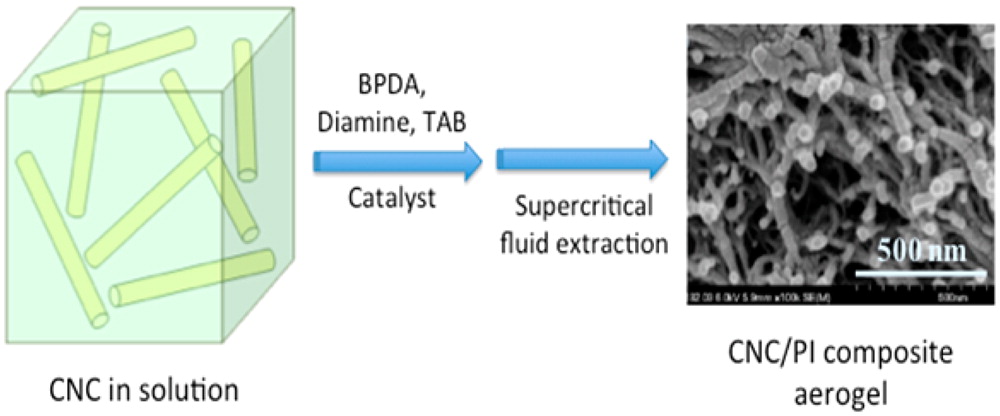The Rowan group focuses on two main classes of porous materials: poly(high internal phase emulsions) and aerogels.
AEROGELS
First discovered by S.S. Kistler in the early 1930's, aerogels are extremely porous, lightweight solids (~0.01-0.1 g/cm3) that typically consist of over 90 vol% air. This property, in combination with their small pore sizes (10-40nm) and large internal surface areas, result in a material with very interesting properties. Most notably, aerogels are known for their ability to be excellent insulators with a thermal conductivity of less than 0.02 W/mK. Aerogels are created by first creating a wet gel (crosslinked material) through a sol-gel method followed by extraction of the liquid phase. A key component in the creation of aerogels is the minimization of surface tension within the pores of the solid phase to avoid collapsing of the pores during drying. Most often this is accomplished through the the use of novel methods such as supercritical fluid extraction (with CO2). In the more recent past, this has also been accomplished through freeze-drying (cryogels) and ambient drying with surface modification.
